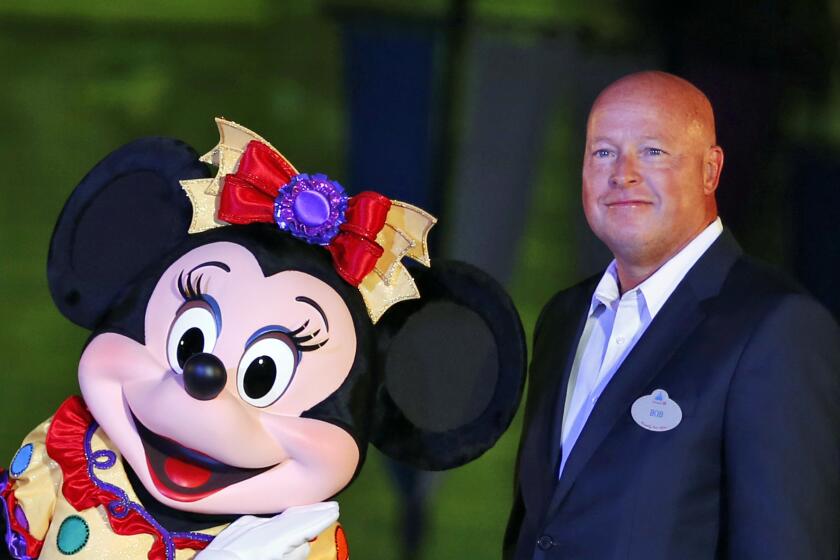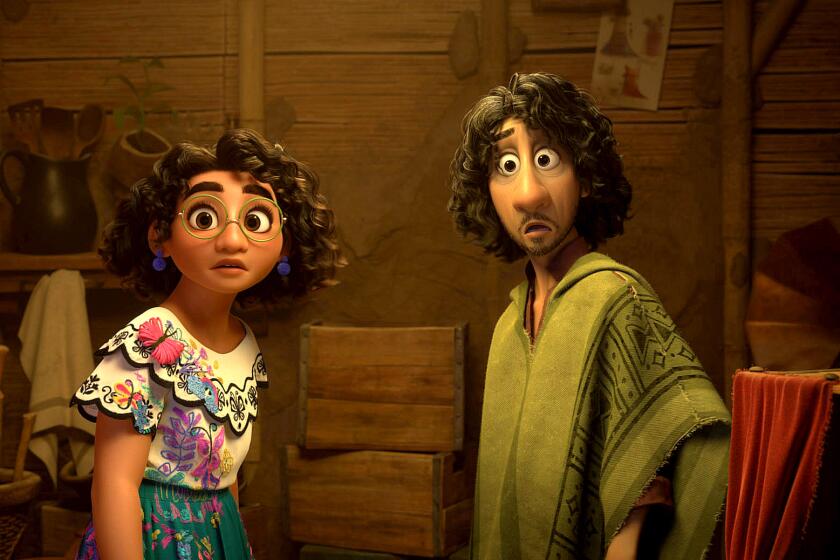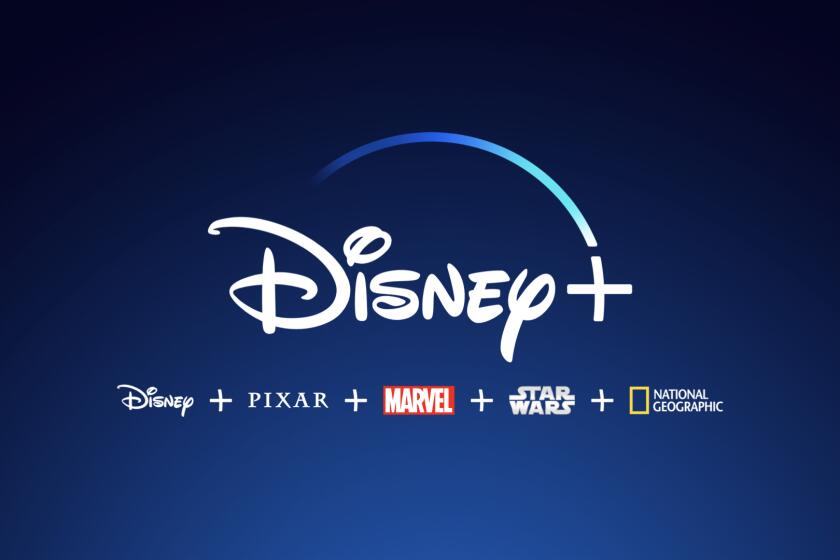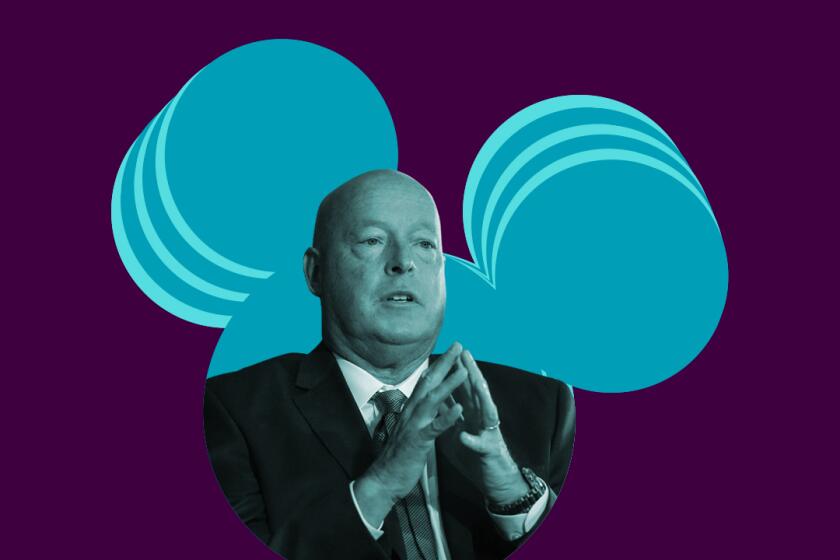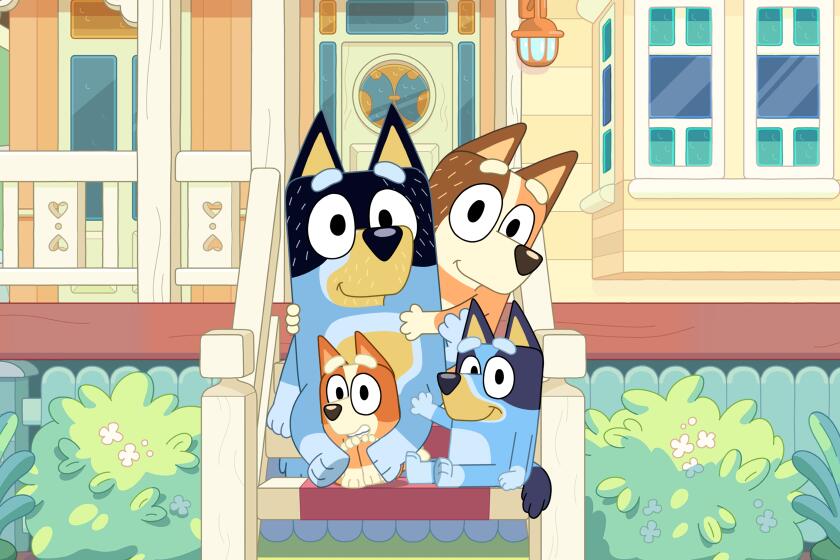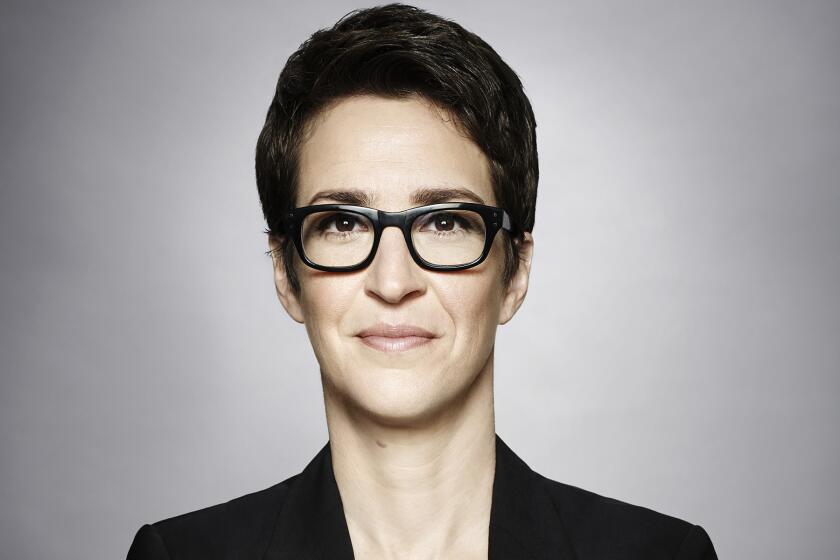Disney+ subscribers are going to have to pay more to avoid commercials

Disney+ subscribers will start seeing ads on the popular streaming service in December. That is, unless they opt to pay more.
Walt Disney Co. on Wednesday said it would launch tiered versions of the service on Dec. 8. Current subscribers who continue to pay $8 a month for the “basic” tier will get commercials. Meanwhile, subscribers who don’t want ads can upgrade to the “premium” tier, which will be $11 a month, an increase of $3 to the monthly fee.
The pricing change comes as Disney+ continues to grow at a steady clip but is also losing money.
The company’s key streaming service added 14.4 million subscribers during its third fiscal quarter, bringing its global total to 152.1 million. Disney+ had 137.7 million subscribers at the end of its second quarter. Analysts had expected Disney+ to add about 10 million subscribers during the quarter, according to data compiled by financial information service FactSet.
Disney’s marquee streaming service beat Wall Street expectations. But earnings and revenue missed projections.
Still, those numbers come at a price. Disney said its direct-to-consumer segment, which includes Disney+, Hulu and ESPN+, lost $1 billion during the quarter, compared with a loss of about $300 million during the same period a year ago. The company spends heavily on movies and TV shows that go directly to streaming, in a massive bet by Chief Executive Bob Chapek on the firm’s future in an increasingly digital world.
Some analysts have raised questions about the strength of the streaming market and whether the costs of competing are sustainable. Netflix’s recent struggles gave Wall Street jitters about the broader media landscape after many big entertainment companies, including Disney, bet the house on a direct-to-consumer business model. Netflix last month said it lost 970,000 subscribers in its most recent quarter, marking a consecutive quarterly decline.
Warner Bros. Discovery last week said it expects the combination of HBO Max and Discovery+ will have 130 million subscribers by 2025, compared with the 92 million it has now. Warner Bros. Discovery CEO David Zaslav has radically pivoted the newly merged companies’ strategy away from building HBO Max at all costs.
Disney+ adds 12 million subscribers in the first quarter, significantly exceeding analysts’ expectations, and its stock rises 8%.
Disney has tried to adapt by including a broader swath of content on Disney+, which started as a boutique streaming service featuring mostly family-friendly shows and movies from Marvel, Pixar, Lucasfilm, Disney Channel and National Geographic. Its catalog expanded with shows such as “black-ish,” the upcoming season of “Dancing With the Stars” and the R-rated superhero movies “Logan” and “Deadpool.”
When Disney+ launched in November 2019, it was a mere $7 a month, which was relatively low for a mass-market streaming service. Now that it offers more, Disney is comfortable charging more, Chapek told analysts during a conference call.
“Since that initial launch, we’ve continued to invest handsomely in our content,” Chapek said. “We believe that we’ve got plenty of price/value room left to go.”
Disney tweaked expectations for Disney+, which the company had previously forecast would hit between 230 million and 260 million subscribers in 2024.
That number included subscribers to Disney+ Hotstar, the company’s service in India that accounts for nearly 40% of the total. But the loss of streaming rights for Indian Premier League cricket, a big driver of international viewership, raised doubts about its projections.
Announced Friday, Disney did not disclose pricing for the ad-supported tier, which is meant to help Disney+ reach subscriber goals.
Disney now expects that Disney+ Hotstar will have “up to 80 million” subscribers in 2024, depending on the status of other cricket streaming rights, said Chief Financial Officer Christine McCarthy. The main Disney+ service is expected to reach 135 million to 165 million in 2024, which McCarthy described as “largely consistent with” its earlier guidance.
Put together, Disney+ and Disney+ Hotstar are aiming for 215 million to 245 million subscribers. Disney+ is expected to become profitable in 2024 as well.
Wall Street was unshaken by the lowered guidance. Shares rose 7% in after-hours trading. The stock had closed at $112.43 a share, up 4%. The Hotstar offering makes far less money per user than Disney+ does, generating revenue of $1.20 a month versus $6.27 a month from subscribers in the U.S. and Canada.
Chapek in June received a three-year contract extension. The board, which voted unanimously in favor of Chapek’s renewal, cited his leadership through the COVID-19 pandemic, his transformation of the business around streaming and the company’s performance. The vote came as Disney was dealing with a political firestorm in Florida and a flagging stock price. Disney shares are down about 30% so far this year.
Bob Chapek has the support of Disney’s board for now. How long will that last?
Disney is also raising prices for Hulu, which will cost $1 more for the ad-supported version in October ($8, up from $7), while ad-free Hulu’s rate will rise $2 a month to $15. Hulu has 42.2 million subscribers, up from 41.4 million three months prior, not counting its version that includes live TV channels.
ESPN+ had already announced a $3-a-month price increase to $10 a month that takes effect this month. The sports service reached 22.8 million subscribers, up from 22.3 million.
Hulu, the more adult-oriented streamer, has served as the launching pad for Disney’s not-so-Disney material, including movies from 20th Century Studios and Searchlight Pictures (formerly 20th Century Fox and Fox Searchlight). Hulu nabbed a bevy of Emmy nominations for shows including “The Dropout,” “Dopesick” and “Only Murders in the Building.”
The recently released “Prey” premiered to critical acclaim. The prequel in the long-running “Predator” franchise had strong viewership, according to the company. Hulu doesn’t release viewership numbers.
The Times toured the Brisbane, Australia, studio where ‘Bluey’ comes together to understand what goes into making the best children’s show on TV.
Disney reported revenue and earnings that beat analyst expectations for the third quarter. The company generated $21.5 billion in revenue, up 26% from the same period last year. Wall Street had anticipated sales of nearly $21 billion on average, according to FactSet. Profit came in at $1.4 billion, up 53% from a year earlier. Earnings per share of $1.09 topped estimates of 97 cents a share.
Revenue and profit from Disney’s parks business surged during the quarter, despite worries about the U.S. economy and inflation squeezing families’ budgets. Sales from parks, experiences and products rose 70% to $7.4 billion, while operating income from the division increased to $2.2 billion, up from $356 million during the prior-year quarter. Analysts had projected revenue of $6.75 billion and income of $1.72 billion.
The U.S. parks business was buoyed by increases in attendance and spending by guests.
